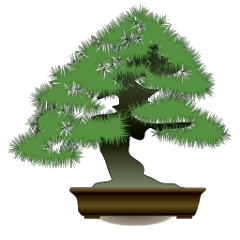By now all the plants are in vegetative stasis and must be sheltered under canopies or pergolas or at least close to a wall, so as not to be affected by frosts or hailstorms. Indoor bonsai need to receive as much light as possible and should not be exposed to cold drafts, or to direct heat from heating.
WATERING
The rule is to give water only when the substrate is dry, allowing the substratum to dry well before watering again. Indoor bonsai will also need less water, although it will be good to vaporize the leaves every day. Never water on freezing days because water is stored both in the tissues and in the soil and no more need to be added. The water of an aquarium (provided it is not marine!) can be used every now and then to water it, being an excellent tonic-fertilizer for the substances contained therein.
PRUNING AND WIRING
This is a suitable month to wrap some branches with wire.
FERTILIZATION
It is not necessary to fertilize outdoor plants. It is possible to continue fertilizing indoor evergreens, greatly reducing the frequency.
PHITOSANITARY TREATMENTS
From the phytosanitary point of view it will be possible to apply a fungicide; insecticides are not necessary.
OTHER WORKS
Transplantation is not recommended in any case, regardless of species. You can take yamadori in the wild with due caution. You can take advantage of the fact that many bonsai are bare to perform targeted treatments.


